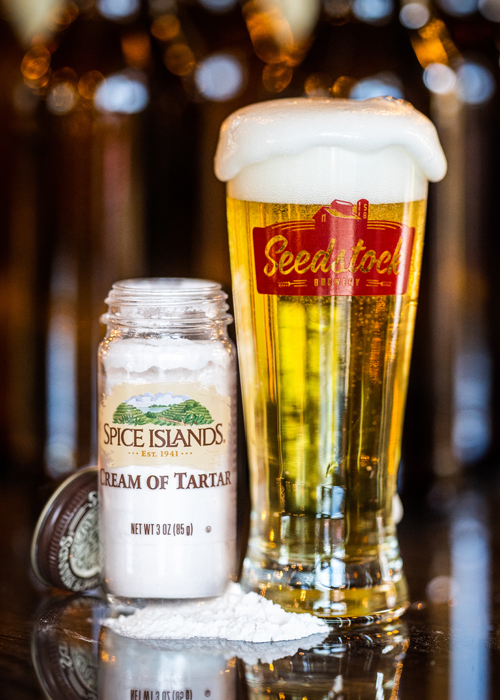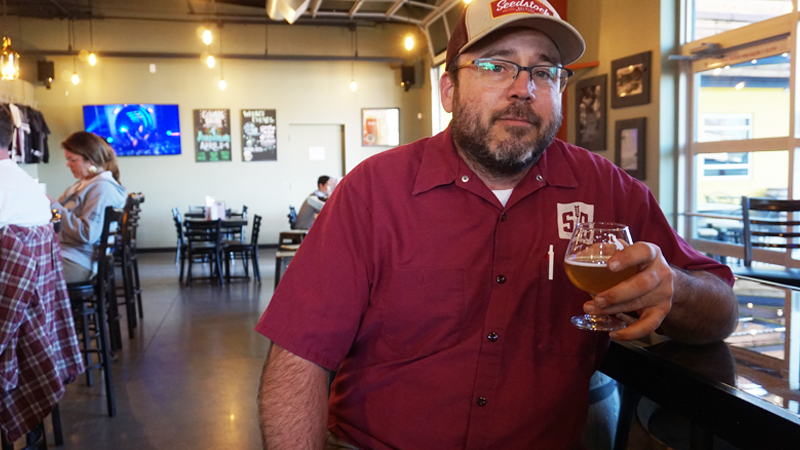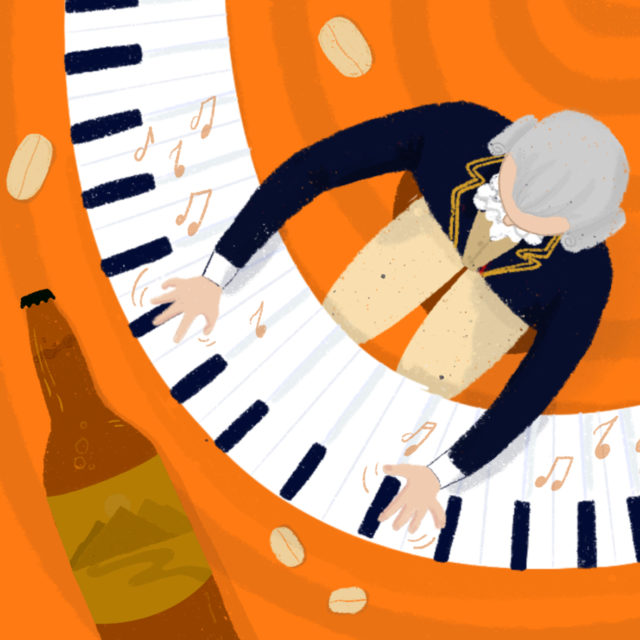Fans of historic beer styles have been waiting a long time for the return of Horner Bier. We just didn’t expect it to show up in Colorado.
While brewers have been resuscitating historic German beer styles like Merseburger, Broyhan, and Berliner Braunbier, Horner Bier hasn’t been so lucky. Andreas Krennmair, author of a book on how to brew forgotten Old World beer styles, says he hasn’t yet seen a commercial version of Horner beer.
“It seems to be a beer style that sounds interesting and unusual, but at the same time is probably too strange for brewers to even attempt to brew it,” Krennmair says.
Which is why, even in the midst of a global pandemic, fans of historic beer styles might be considering a trip to Denver. This month, the city’s Seedstock Brewery is releasing a pilot batch of Horner Bier, making it the first brewery to put Horner into commercial production in over 100 years. Its first half-barrel batch will be available to sample at Seedstock on Friday, Aug. 28.

By the Horns
The only beer style name-dropped by Mozart himself, Horner Bier was one of the true oddballs of pre-lager Continental brewing: Instead of barley or wheat, the long-extinct beer from Horn, Austria, was made with 100 percent oats. Not bitter nor malty, Horner Bier was sour, thanks to the addition of potassium bitartrate, a.k.a. cream of tartar (though how that actually worked has long been lost to history, along with the rest of the beer’s production secrets).
With a shoutout in Mozart’s lyrics to “Bei der Hitz im Sommer ess ich,” it has been an obscure point of obsession for many writers who cover Old World brewing, by which I mean me.
I first came across a reference to Horner Bier in an 1865 edition of the classic brewing text “Die Gährungschemie” (“Fermentation Chemistry”) by Carl Balling. After finding the Mozart connection, I started doing more research. I queried archivists and historians in Austria, including Baroness Dr. Gertrud Buttlar-Elberberg at the castle archives in Horn; and Dr. Erich Rabl at the Horn city archives. Neither found anything about the beer. In Vienna, I enlisted the help of the research desk at the Austrian National Library. When I returned a few hours later, the only literature they had for me was a printout of what appeared to be an online article published in 2009 — it was my own blog post on the subject.
Cloudy, sour, acidic flavors were common casualties of the late-19th-century spread of lager beer throughout Central Europe. While Horner Bier was extremely popular in Vienna and its environs during Mozart’s lifetime in the second half of the 18th century, it disappeared around the turn of the 20th century.
“Mainstream lager kind of killed off these older beers,” says Seedstock head brewer Jason Abbott. “When lager became the popular thing, when it was more commercially done and easier to do, a light, non-lagered beer is not something that was really made anymore.”
Another reason for breweries to make literally anything other than Horner Bier? Unlike the barley that goes into Pilsner and other lagers, oats are a major pain for brewers. “It’s very gummy,” Abbott says. “I had to use a lot of rice hulls, just to keep things moving. It’s almost as bad as working with 100 percent wheat.” (Commonly used when brewing with grains like wheat or oats, rice hulls help separate sticky mash so to prevent it getting “stuck.”)
Following the success of a homebrew-sized trial run of Horner Bier earlier this year, Abbott brewed a larger, half-barrel pilot batch for this release, with a goal of ramping up to a full 7-barrel batch in the near future.

Horner in Denver
According to Abbott, the 21st-century version of the beer will be refreshingly well carbonated.
“It’s conditioning right now,” says Abbott. “We really like to get it to what some people would consider overly carbonated. I like it on the verge of Champagne, to give it that nice bright feel.”
The taste, he says, is pretty far removed from a typical hoppy craft brew.
“It’s kind of a sweeter, citrusy beer, not quite a lemon [flavor], but it leans that direction, but the sweetness of the oat almost gives it a malty feel,” Abbott says. “It is so different. It’s super dry. It definitely has the appearance that it’s going to be very full-bodied, but it finishes quite dry.”
With just 3 percent alcohol by volume, a cloudy appearance, and dry finish, Seedstock’s Horner Bier might be the perfect summer quencher, reflecting the description from Mozart that he drinks Horner Bier “im heißen Sommer nur” — “only in hot summer.” Much of that refreshment stems from the beer’s light acidity.
“From a lot of research and reading we did, we found that it’s rumored that they used cream of tartar, tartaric acid, to give it a little bit of sour, but also brightness,” Abbott says. “It’s very interesting, but also very drinkable. I wouldn’t call it ‘sour.’ To me it’s sort of a sweeter acidity that comes through.”
While Horner Bier may not be the next gose, Abbot believes the Austrian style deserves a place in the canon of traditional beers. “Everybody knows Germany, but they don’t necessarily think of Austria,” he says.“[Horner Bier is] such a different beer, and it carries such a cool story of where it’s from.”
For now, fans of historic beers who can’t make it to Denver will have to make do with vicarious thrills, plus the hope that Horner Bier might yet be resurrected again, if only for the sake of its history and provenance.
